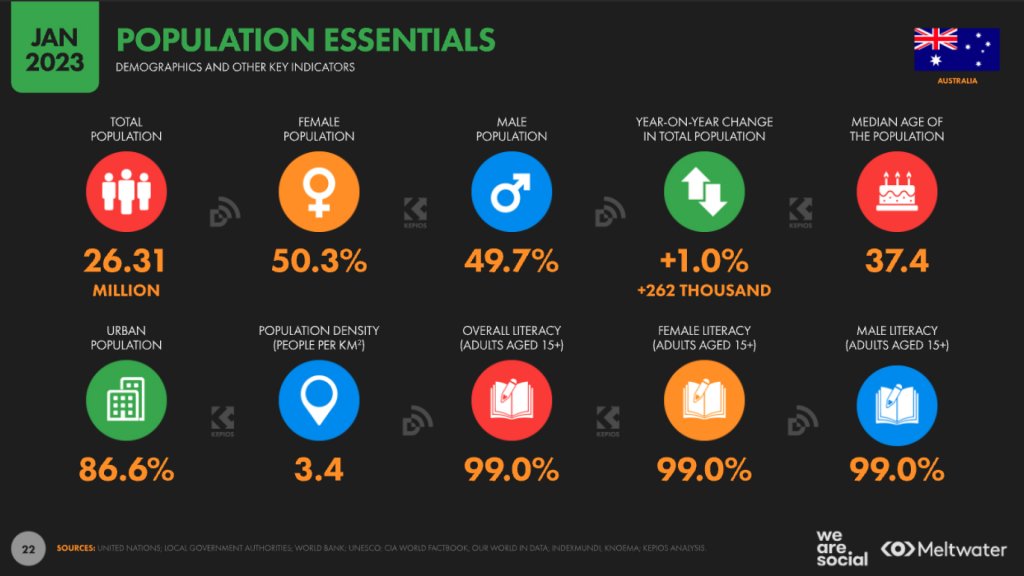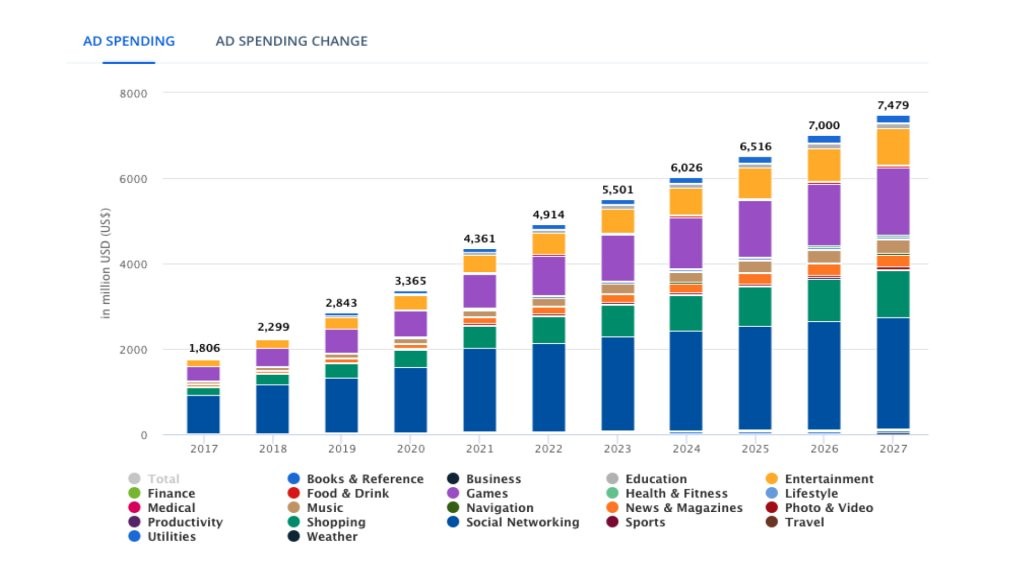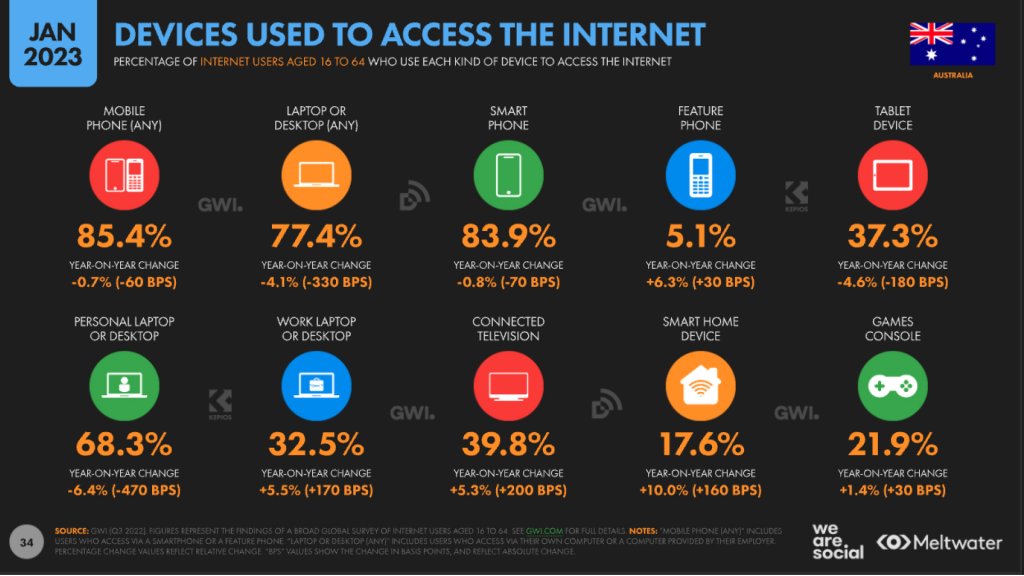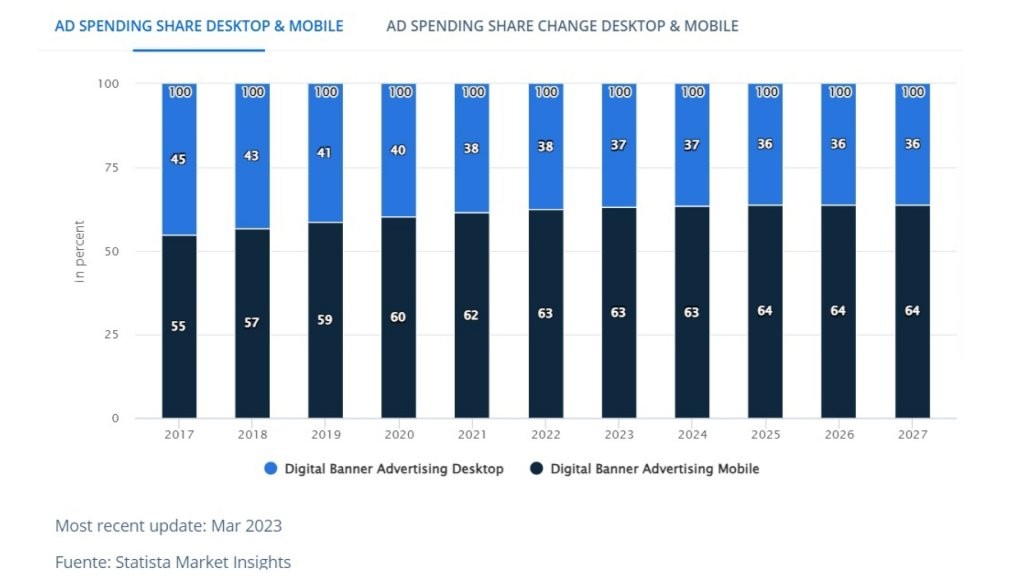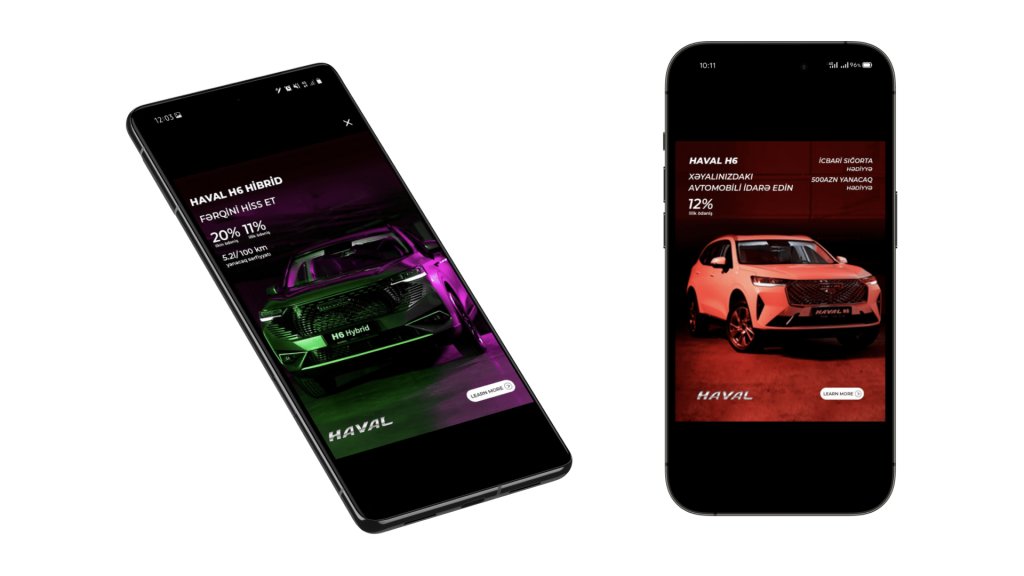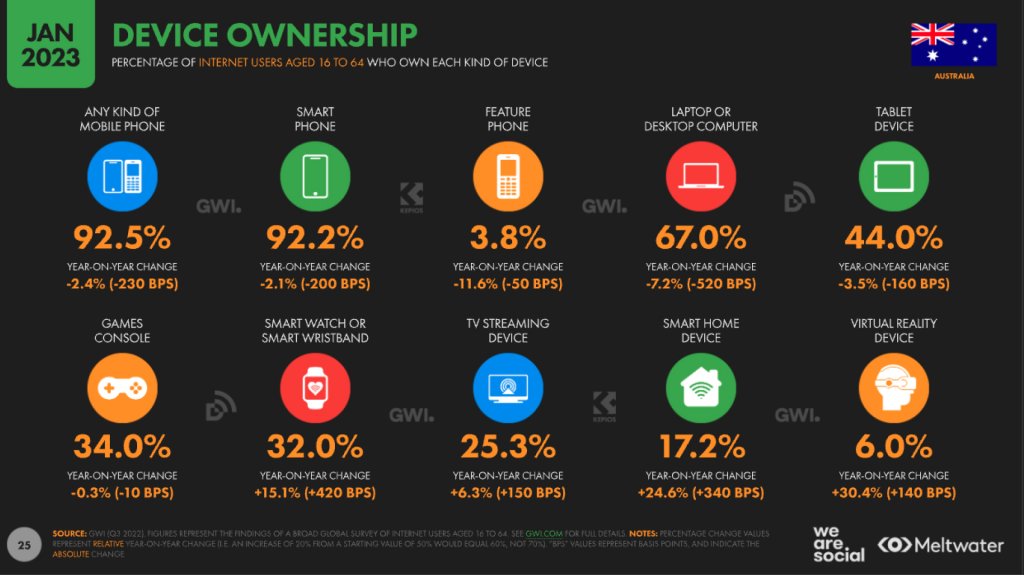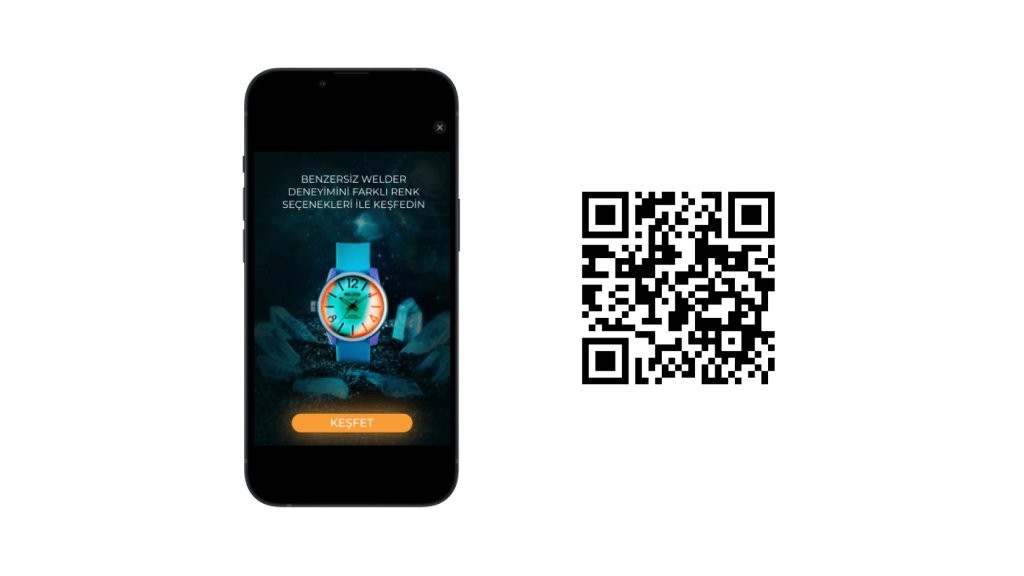Programmatic Advertising in Australia 2023: key reasons to advertise on mobile apps
Programmatic advertising in Australia is a new trend. Brands are trying to catch the attention of users in a variety of ways.
And while some of them still favor traditional media over digital. The last few years there’s been a significant increase in spending on digital advertising media. Especially in-app advertising and banner ads.
Here we share with you our overview of digital based on Statista’s research.
In-App advertising in Australia
In-app marketing is the promotion of products or services in a mobile app and spending advertising budget to display ads in the app.
This includes various types of ads such as banners, pop-ups, videos, Rich Media and native ads. They are integrated into the user interface of the mobile app and appear as part of its content.
Statista’s analysis showed 21 categories of apps for in-app advertising:
books and directories, business, education, entertainment, finance, food and drink, games, health and fitness, lifestyle, medicine, music, navigation, news and magazines, photos and videos, productivity, shopping, social media, sports, travel, utilities and weather.
And what can we see:
- Ad spending in the In-App Advertising market is projected to reach US $5 million in 2023.
Investing in mobile programmatic advertising in Australia is a smart move for several reasons. With a thriving digital landscape and growing mobile device usage, mobile ads offer a huge potential for reaching a broad audience.
Besides, the country’s high smartphone penetration, combined with a population increasingly reliant on mobile apps, creates an effective channel for diverse ad targeting.
- Ad spending is expected to show an annual growth rate of 7.98%, leading to a projected market size of US$7,479m by 2027.
Brands realize that investment in mobile programmatic advertising in Australia has compelling benefits. With the increasing use of digital technology, mobile advertising is well placed to succeed.
For example, according to Data Reportal 2023, the total population of Australia is 26.31 million. At the same time, 83.9% of users aged 16 to 64 prefer to use a smartphone to access the Internet.
Digital Banner advertising in Australia
- Ad spending in the Banner Advertising market is projected to reach US$2bn in 2023.
Banner advertising is a type of online ads where graphic ads, often called banners, are placed on websites, apps or digital platforms to promote products, services or brands.
Such banners usually have different sizes and formats, and may include images, text, animation, or sometimes interactive elements.
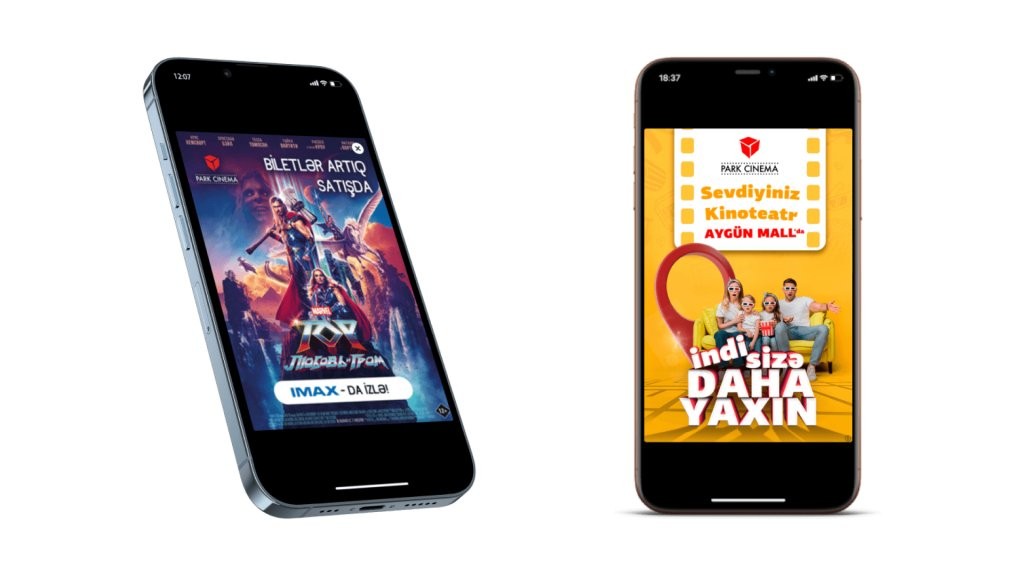
And since this type of advertising is the most popular in the digital space, the increase in spending on it can be quite obvious.
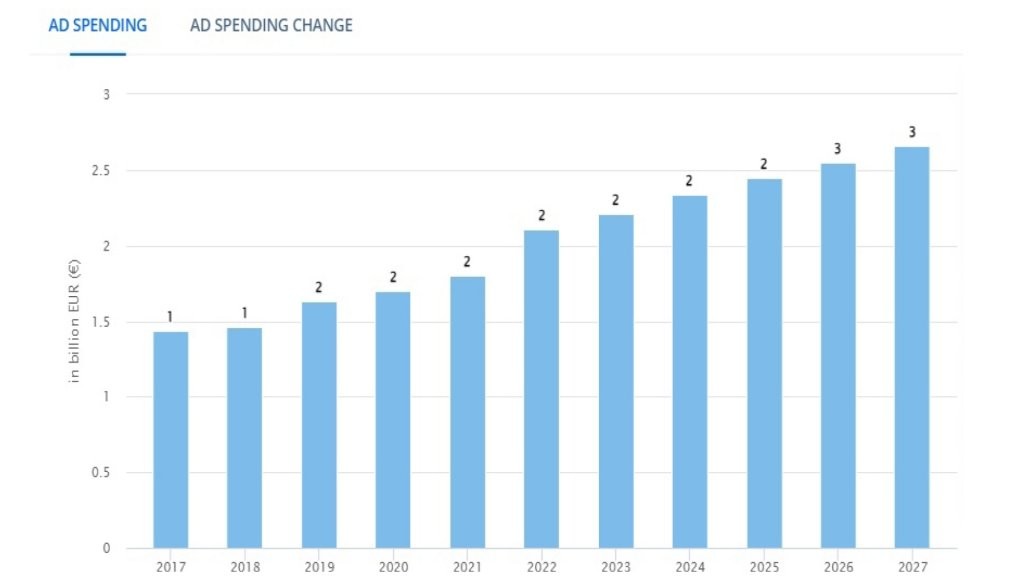
- The average ad spending per internet user in the Banner Advertising market is projected to amount to US$103.50 in 2023.
In recent years, advertisers have invested significantly in digital promotion. After all, according to Data Reportal, Australian users spend about 6 hours online. So, it’s important to use all methods to grab the user’s attention.
Banner advertising is one of them.
By comparison, the average ad spending per internet user in the Banner Advertising market in the United States is projected to amount to US$200.90 in 2023.
If you want to start a mobile campaign, you need to know that in the BYYD platform, our production department creates banner ads as a promotional bonus. Check out examples here.
- In the Banner Advertising market, 64% of total ad spending will be generated through mobile in 2027.
As we said, Australians spend about 6 hours online and the share of mobile traffic is 42.58%. So exactly mobile channels are becoming the future of digital advertising.
That’s because of their convenience, speed of information delivery, and the total spread of cellular communication among the population.
- The Banner Advertising market is expected to show an ad spending growth of 0.6% in the mobile market in 2024.
The effectiveness of banner ads can vary based on factors such as design, placement, relevance, and the overall quality of the ad content.
The digital advertising landscape has evolved over time, leading to more sophisticated ad targeting methods and formats, including Rich Media banners and interactive ads.
Thus, it is clear that banner ads can be a cost-effective way to reach a wide audience and drive traffic to your websites.
By the way, on BYYD platform, we also provide Rich Media banners which can be very useful in mobile promotion.
Check out the examples and if you would like to start your own mobile programmatic campaign, email us at hello@byyd.me
Was it useful? Then share it with your friends and colleagues!
For consultations and cooperation – contact through the form on the site.
